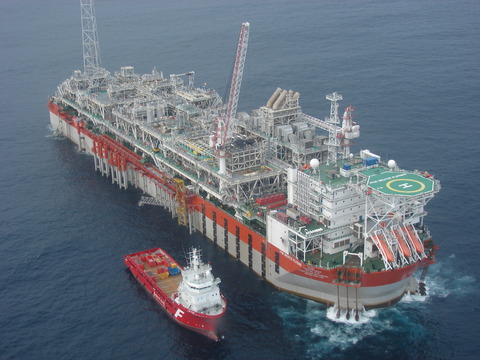Big tanks go for advanced level sensing
4 Sep 2012

London – ?Tank-fill level can be a relatively straightforward parameter to monitor, but level sensors can have a significant impact on the productivity and safety of process facilities - as major players in the oil & gas and chemicals sectors are discovering.
In challenging process conditions off the west coast of Africa, BP Exploration has replaced unreliable level transmitters, previously used on a floating production, storage and off-loading (FPSO) vessel, with guided wave radar (GWR) transmitters.
Operating 160km off the west coast of Africa, the BP FPSO processes and stores oil production for export. At 310 meters in length, it has an oil storage capacity of 1.77 million barrels and can process up to 240,000 barrels per day.
Changing process conditions and the presence of foam and vapour, as well as dirty, sticky fluids, made this a difficult application for measuring level. The original GWR transmitters had compatibility issues with the FPSO’s Foundation fieldbus network.
Moreover, the limited capabilities of the devices in detecting low-dielectric hydrocarbons required coaxial probes to increase the strength of the surface signal. These probes, however, are susceptible to the build-up of sticky solids entrained within the production fluid, which led to unplanned shutdowns and lost production.
To address these issues, BP Exploration worked with a new transmitter supplier Emerson to replace existing GWR units with its Rosemount 5300 GWRs. These employ a special signal-processing technology that can detect low dielectric fluids and send and receive cleaner, stronger signals.
The new devices allow the use of single-lead probes with more tolerance to solids build-up, and that eliminate trips due to false readings. A Foundation fieldbus interface also made installation and configuration of the GWRs quicker and easier on the FPSO application.
The improved level detection enabled by the new instruments has also helped BP Exploration improve safety.
The susceptibility of the existing GWRs to material build-up on the co-axial probes and their inability to distinguish the presence of a light hydrocarbon layer on top of the water meant that the level measurements were unreliable. This compromised one of the layers of protection used to ensure safe operations.
Following the installation of the GWR transmitters, the process data has confirmed the accuracy and reliability of the instruments and their suitability for the widely varying process conditions of the FPSO, according to Emerson.
In another interesting application, Huntsman Corp. has installed an expanded wireless system to enhance tank-gauge monitoring capabilities at its chemicals manufacturing facility in Port Neches, Texas.
The infrastructure at the Huntsman Port Neches facility now includes Apprion’s ION tank-gauging application, as well as additional wireless field appliances and monitoring and safety devices from the same vendor.
Huntsman first deployed the Apprion industrial wireless infrastructure in 2009 as part of its Project Zero safety plan to eliminate injuries, defects, and environmental releases at the facility.
Prior to this implementation, the tank gauge data collection process at Port Neches required pro-active manual access, often in locations that were technically difficult for operators to reach. The extended system combines Apprion’s tank-gauging technology with its existing wireless infrastructure and Mobility application.
Huntsman selected the tank gauging application to unify disparate tank gauging hardware technologies into a single dashboard for a complete view of tank conditions and status.
Its personnel now have a dashboard view into critical tank data, which allows more accurate measurement and monitoring of inventory levels. It can also reduce the potential for significant losses due to environmental incidents.
Huntsman’s operators are no longer required to execute inefficient and error-prone manual data collection processes, said Apprion. With the new tank gauging application, it added, operators can more easily monitor remote control stations, while the enhanced integration will enable the company to more easily add applications in the future.

